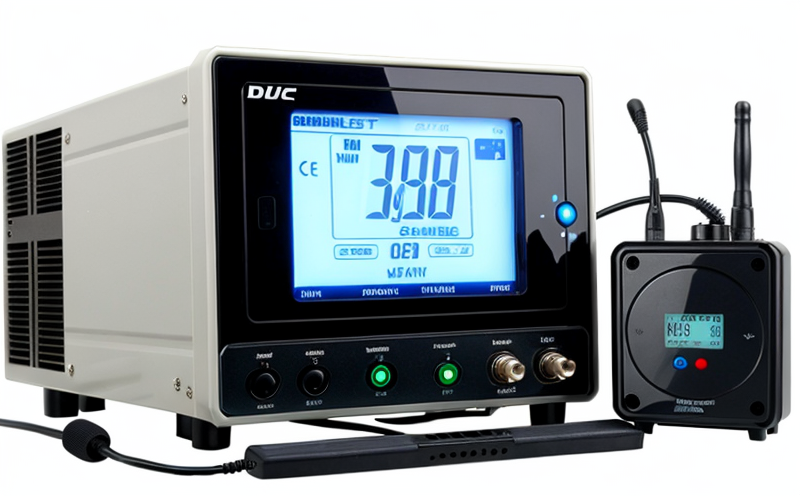ETSI EN 301 893 Broadband Radio Access RF Testing in 5 GHz
The European Telecommunications Standards Institute (ETSI) standard ETSI EN 301 893 is pivotal for ensuring the interoperability and reliability of broadband radio access networks operating at frequencies around the 5 GHz band. This standard plays a crucial role in setting the parameters for testing equipment that operates within this frequency range, particularly those used in wireless communication systems.
The primary focus of ETSI EN 301 893 is to define the test procedures and acceptance criteria necessary to validate the compliance of radio access networks with regulatory requirements. This includes ensuring that devices meet the technical specifications outlined by regulatory bodies such as the European Commission (EC). The standard covers a wide range of testing aspects, including but not limited to electromagnetic compatibility (EMC), interference between different systems, and performance under various environmental conditions.
The 5 GHz band is increasingly utilized for wireless communication due to its high data throughput capabilities. However, this also means that it can be prone to interference from other radio devices operating in the same or nearby bands. ETSI EN 301 893 ensures that devices are tested under realistic conditions to minimize such interference and ensure seamless operation.
The standard is particularly relevant for quality managers, compliance officers, R&D engineers, and procurement specialists who need to ensure that their products meet the stringent requirements set by regulatory bodies. Compliance with this standard can significantly enhance the marketability of a product in Europe and other regions where ETSI standards are recognized.
Why It Matters
The importance of ETSI EN 301 893 cannot be overstated, especially as wireless communication technologies continue to evolve. Meeting the requirements set by this standard ensures that products can operate reliably in a complex and increasingly crowded electromagnetic environment. This is particularly critical for devices operating at 5 GHz, where interference from other signals can significantly impact performance.
Compliance with ETSI EN 301 893 helps manufacturers avoid costly rejections during product certification processes. It also ensures that products are ready to meet future regulatory requirements and technological advancements. For quality managers and compliance officers, adherence to this standard provides a clear roadmap for ensuring product quality and regulatory compliance.
For R&D engineers and procurement specialists, ETSI EN 301 893 offers valuable insights into the testing procedures that need to be followed. This knowledge is essential for developing products that meet stringent technical specifications and are ready for market release. It also aids in selecting suppliers who can provide components and materials that adhere to these standards.
In summary, ETSI EN 301 893 is not just a regulatory requirement but a key enabler for ensuring the reliability and performance of broadband radio access networks operating at 5 GHz. Compliance with this standard enhances product quality, ensures market readiness, and minimizes compliance risks.
Scope and Methodology
The scope of ETSI EN 301 893 encompasses the testing procedures for broadband radio access networks operating at frequencies around 5 GHz. This includes a wide range of test parameters, apparatus, and acceptance criteria designed to ensure that devices meet regulatory requirements and operate reliably in real-world conditions.
| Test Parameters | Description |
|---|---|
| Electromagnetic Compatibility (EMC) | Evaluation of the ability of a device to perform its intended function without causing unacceptable interference to other devices operating in the same or adjacent bands. |
| Interference Testing | Determination of the susceptibility and immunity of a device to electromagnetic interference that may arise from other radio systems operating in the vicinity. |
| Performance Testing | Evaluation of the performance characteristics of a device under various operational conditions, including signal strength, data throughput, and error rates. |
| Apparatus Used | Description |
|---|---|
| Test Set | A calibrated instrument used to generate and measure electromagnetic signals within the 5 GHz band. |
| Environmental Chamber | A controlled environment that simulates various operational conditions, including temperature, humidity, and altitude. |
| Interference Generator | An instrument used to introduce intentional interference into the testing environment to assess a device's immunity. |
The methodology for conducting these tests is detailed in ETSI EN 301 893. It specifies the steps and procedures that must be followed, including the calibration of test equipment, the setup of environmental conditions, and the execution of various test scenarios.
International Acceptance and Recognition
- Australia: Devices operating in the 5 GHz band must comply with the corresponding Australian standards, which are aligned with ETSI EN 301 893.
- New Zealand: Similar to Australia, New Zealand's regulatory requirements for devices in the 5 GHz band align closely with these European standards.
- Japan: While Japan has its own set of standards, many manufacturers opt for ETSI EN 301 893 compliance as it ensures broader market access.
- Singapore: The Singapore Telecommunications Authority (STRA) recognizes ETSI EN 301 893 as a benchmark for testing broadband radio access networks.
- United States: Although not directly referenced in U.S. regulations, many American manufacturers and importers comply with this standard to ensure global market compatibility.
- Canada: Similar to the United States, Canadian standards are often aligned with ETSI EN 301 893 for devices operating in the 5 GHz band.
The widespread international acceptance of ETSI EN 301 893 highlights its significance in ensuring global interoperability and compliance. Compliance with this standard can open up numerous market opportunities, particularly for manufacturers aiming to penetrate European markets as well as other regions that recognize these standards.





